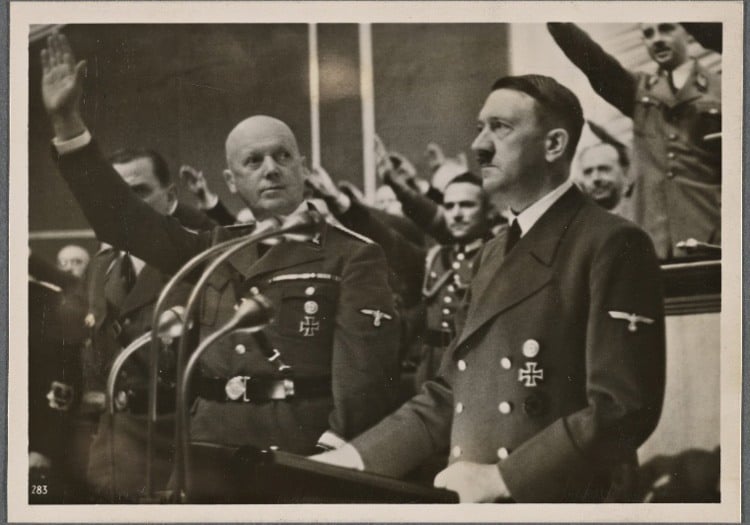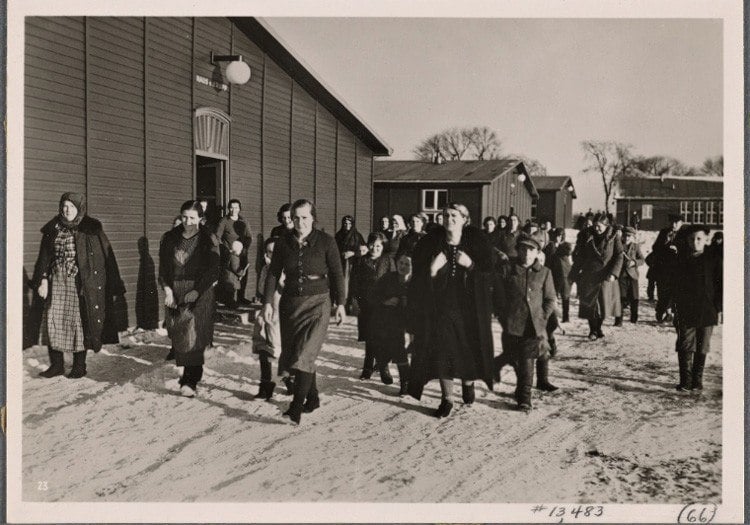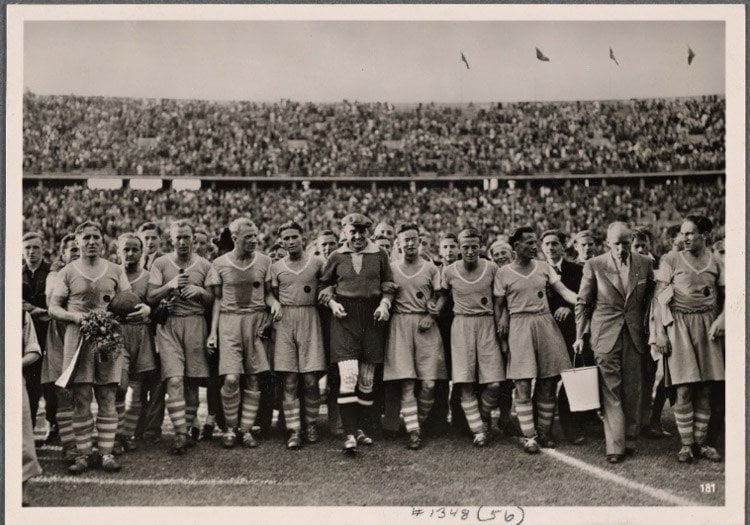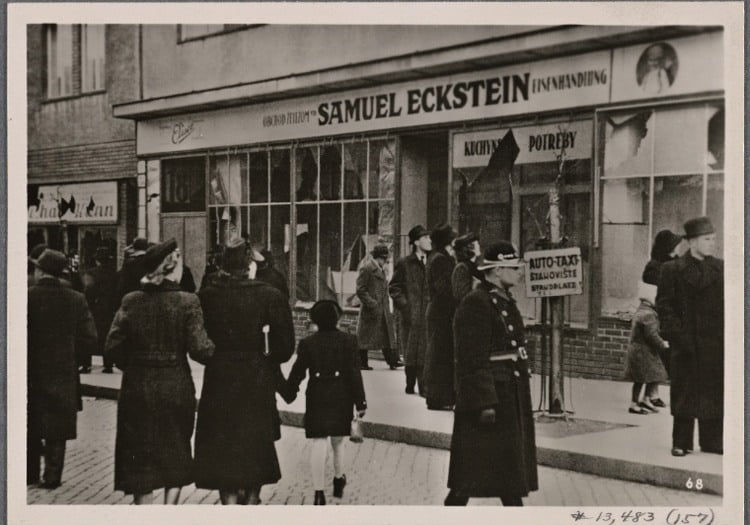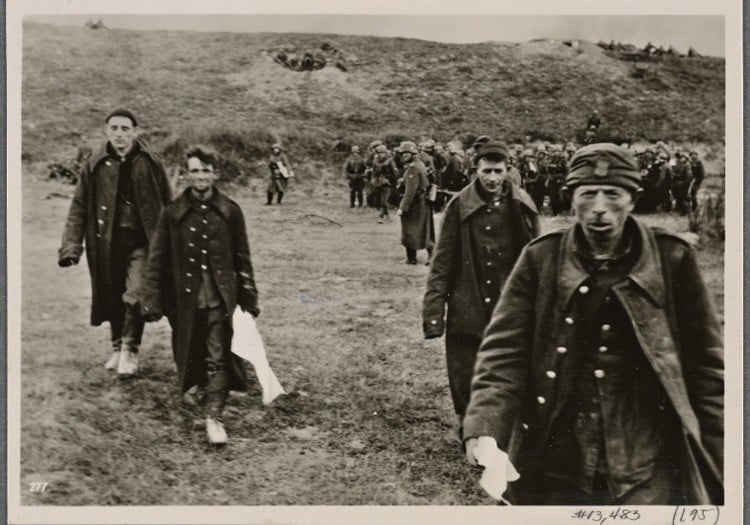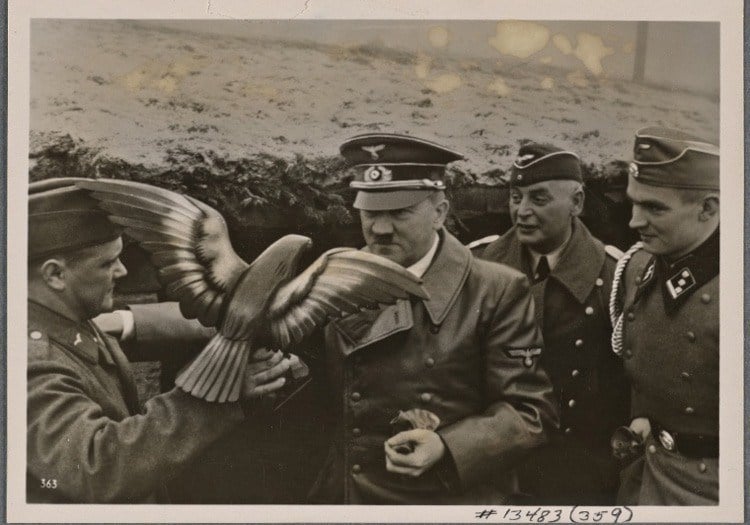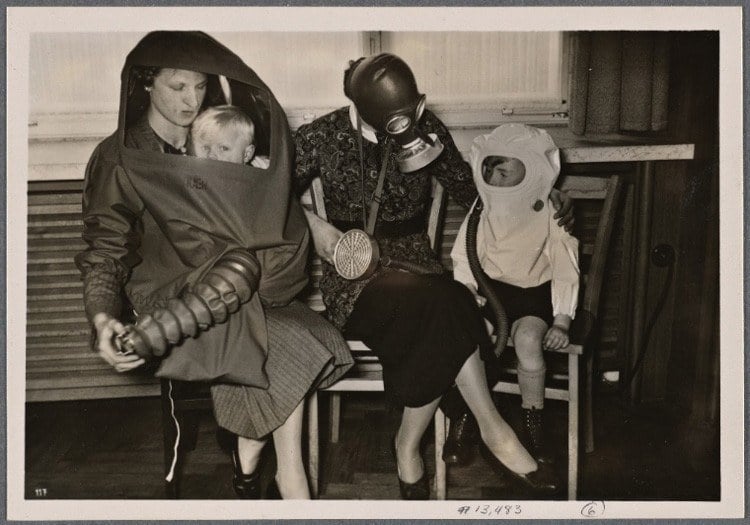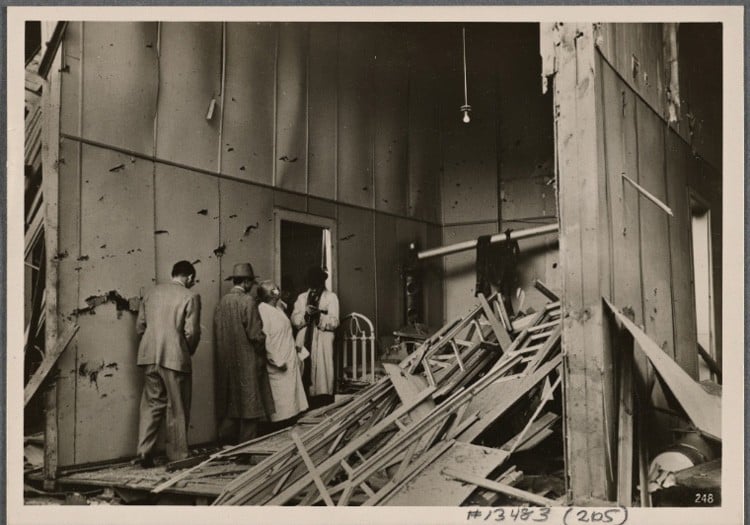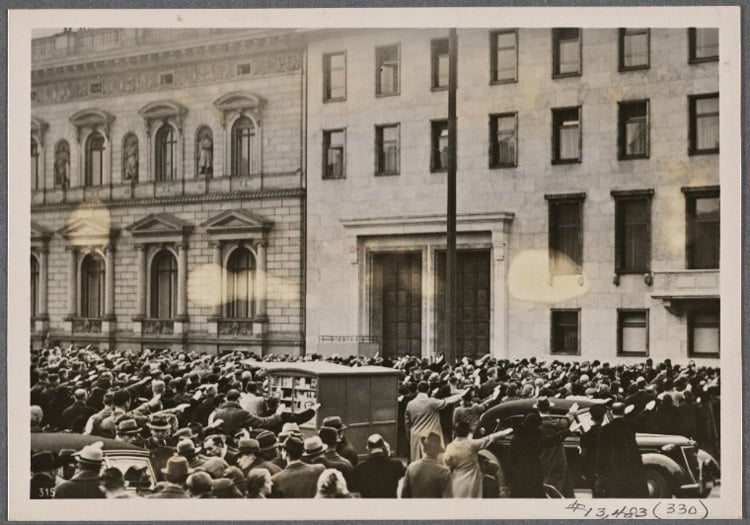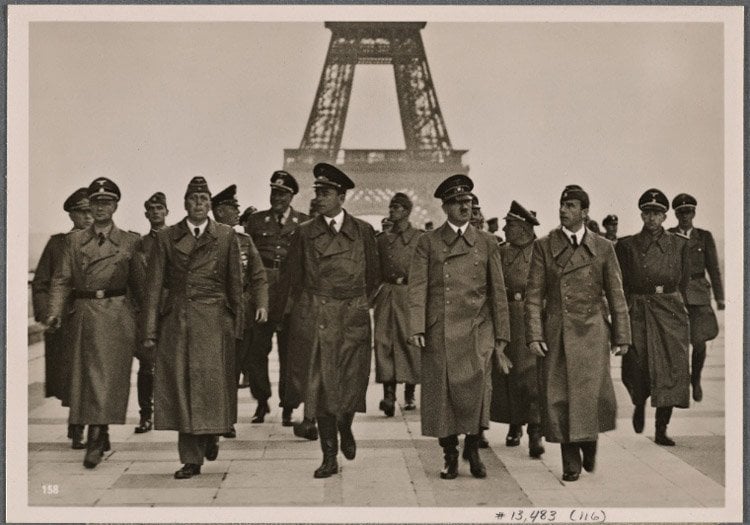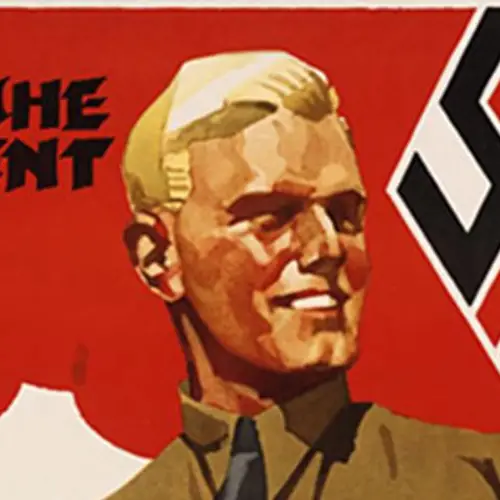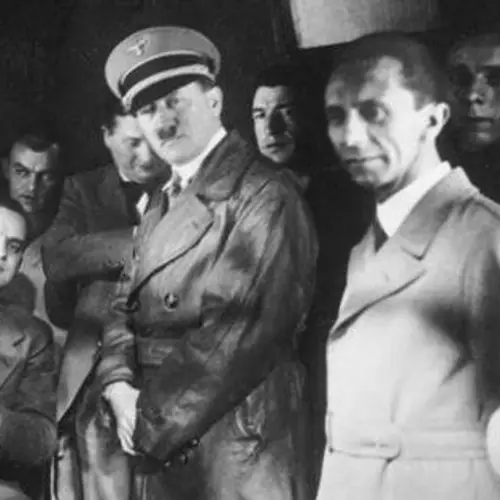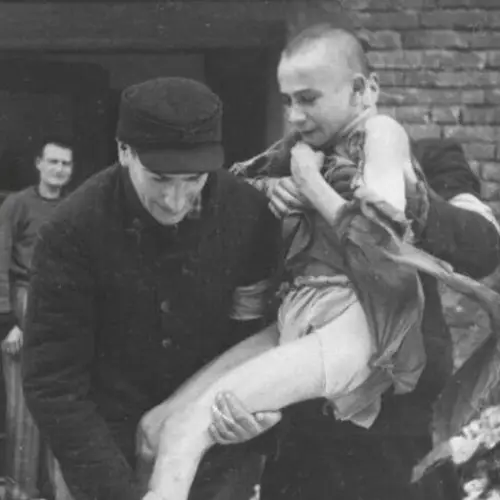1 of 30
Original caption: In his speech to the Reichstag on October 6th, the Fuhrer offered a hand of peace and outlined the new order in eastern Europe. "But I do not doubt for a second that Germany wins." The Reichstag and the entire nation joined in this affirmation with cheers. 1939.New York Public Library
2 of 30
Original caption: The great resettlement of the ethnic Germans from the East began its second phase. Following the Baltic Germans, well over 100,000 Volhynian Germans came back into the Reich. The men started the trek to the new settlements, while the women and children found a caring reception in the large transit camps. 1939. New York Public Library
3 of 30
Original caption: The outbreak of war has not disrupted the peaceful life of the Reich. In the packed Olympic Stadium the finals of the German soccer championship took place. Schalke were the champions again. 1939.New York Public Library
4 of 30
Original caption: Czechoslovakia falls more and more into decay. In Pressburg serious incidents take place between Czechs and Slovaks. The Slovaks smash the shop windows of all the Jewish businesses. 1939. New York Public Library
5 of 30
Original caption: The surrender of the Polish capital is inevitable: Polish deserters, who see the futility of the Polish position, place their fate in the hands of the German Army. 1939. New York Public Library
6 of 30
Original caption: The Fuhrer visited a Luftwaffe air base and sat near the Christmas tree in the midst of the troops. He visited anti-aircraft positions in the Western Air Defense Zone, where a gunner presented him with a hand-carved wooden eagle. 1939. New York Public Library
7 of 30
Original caption: Despite the war, the Hitler Youth held the 5th Winter War games in Garmisch-Partenkirchen, with good results despite the hardships. 1939. New York Public Library
8 of 30
Original caption: Faced with the complete superiority of the German army, Warsaw felt compelled to surrender. In the Skoda motor works--eight kilometers from Warsaw--the surrender negotiations for the former Polish capital city take place under the auspices of General Blaskowitz. 1939. New York Public Library
9 of 30
Original caption: The warm friendship between Japan and Germany finds expression in a Japanese art exhibition in Berlin. The Fuhrer greets Japanese Ambassador Oshima. 1939. New York Public Library
10 of 30
Original caption: Besides the people's gas mask, there are also gas defenses created for German children. 1939.New York Public Library
11 of 30
Original caption: At this time the civil populations of the Westmark cities who had found themselves in the Reich at the outbreak of war returned home. The thanksgiving of the returnees was also a time to give thanks to the Fuhrer and the Army. 1939. New York Public Library
12 of 30
Original caption: Finally the Führer met the Duce in Florence, where he once more made a fundamental declaration of the friendship of the two nations and the unshakeable firmness of the Axis. 1940. New York Public Library
13 of 30
Original caption: ...the operating room destroyed and the maternity ward heavily damaged. Again women and children are sacrificed to this criminal way of war. 1940. New York Public Library
14 of 30
Original caption: In the territories, especially those which suffered from the war, NSB Sisters arrived to ensure that captured supplies were divided equally and fairly among the needy populace. 1940. New York Public Library
15 of 30
Original caption: In these days Norwegian troop detachments everywhere put down their arms and were taken away as prisoners. They realized that the struggle had become pointless. 1940. New York Public Library
16 of 30
Original caption: In the wreckage were found clues that pointed to the bomb's foreign origin. It was clear to everyone in the world that the perpetrator of this public crime was England, whose statesmen have made the destruction of Hitlerism their stated war goal. 1940. New York Public Library
17 of 30
Original caption: Eight dead and sixty wounded were sacrificed to a reckless bomb attack which targeted the Führer. Adolf Hitler had left the gathering early and was acclaimed in Berlin the next morning by thousands who simply gave thanks: The Führer lives! 1940. New York Public Library
18 of 30
Original caption: The German soldier knows why he is in the field. He knows the reasons for this war and hungers after news. So every soldier's newspaper is carefully studied. 1940. New York Public Library
19 of 30
Original caption: At the end of the month, the Führer undertook an important journey to let the whole world know that Germany is active in diplomacy. On the French-Spanish border he held talks with Spanish head of state General Franco. 1940.New York Public Library
20 of 30
Original caption: The repatriation of German ethnic groups, which began with the Balts, has not yet finished. 45,000 Germans from Bessarabia, who left the homeland in 1814, now come back to the great Reich. In the Galatz refugee camp, they waited in their wagon trains to be transported by Danube steamers. 1940.New York Public Library
21 of 30
Original caption: On the return trip from Brenner, the Fuhrer was received everywhere with hearty cheers from the population. 1940.New York Public Library
22 of 30
Original caption: While Denmark understood the necessity and reasonableness of Germany's actions, there were supporters of the English in Norway who agitated for resistance. Nevertheless German troops marched into Oslo with bands playing. 1940.New York Public Library
23 of 30
Original caption: In the war kindergartens of the NSV, used by working mothers to ease the burden of caring for their children, the children not only play happily and eat well, but are also carefully taught habits of good health for this war generation. 1940.New York Public Library
24 of 30
Original caption: On July 19th, the Führer spoke to the German Reichstag in Berlin and the Italian Foreign Minister Ciano to report on the campaign in France and to appeal one last time to "English reason." 1940.New York Public Library
25 of 30
Original caption: In Norway the dive bomber crews played a decisive role. They repeatedly broke the senseless resistance that was offered. The population as a whole always knew that the German soldier was a "good guy". If not, why would these Norwegian ski girls be such interested spectators of the Luftwaffe? 1940.New York Public Library
26 of 30
Original caption: In the prisoner-of-war camps were soon represented all the races and colors that the plutocrats in France and England had called "to the defense of European civilization". A fearful mixture of peoples, lower than beasts, who had butchered captured German soldiers in various ways. 1940. New York Public Library
27 of 30
Original caption: Where at one time French hate triumphed, this occasion features terms which exclude French participation in further war aims and betters Germany's military situation versus England. 1940. New York Public Library
28 of 30
Original caption: The Fuhrer inspects Paris, which has quickly returned to normal life under German occupation troops. At the Fuhrer's side are professors Giesler, Speer and Breker. In the background is the Eiffel Tower. 1940.New York Public Library
29 of 30
Original caption: Unscrupulous agitation turned the French civil population into refugees who wandered by the hundreds of thousands along the country roads. German organizations and Army doctors saw to these families' needs. 1940. New York Public Library
30 of 30
Like this gallery?
Share it:
